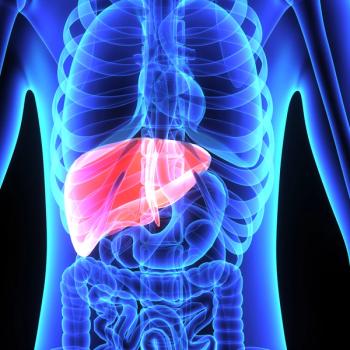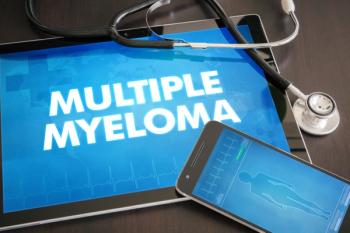
A study published in JCO Clinical Cancer Informatics found significant decreases nationwide in the number of patients being seen for cancer-related care due to the COVID-19 pandemic.

Your AI-Trained Oncology Knowledge Connection!


A study published in JCO Clinical Cancer Informatics found significant decreases nationwide in the number of patients being seen for cancer-related care due to the COVID-19 pandemic.

Researchers suggested that these findings support using minimal residual disease as a major stratification variable in all clinical trials to be conducted in patients with triple negative breast cancer.

These study results suggested that a longer time to surgery does not lower overall survival for women with early-stage breast cancer who had to delay operations due to the COVID-19 pandemic.

CancerNetwork® will be hosting a tweet chat on survivorship this Friday, August 14th, at 1 PM EST.

The American Society of Hematology released guidelines that “take providers through the conversations they have with newly diagnosed patients, almost in real-time.”

The expert oncologist/hematologist spoke with CancerNetwork® about the challenges brought to light by the current pandemic.

The study is evaluating itolizumab in patients with severe acute graft-versus-host disease as a first-line treatment concomitant with standard of care.

A complete response letter was issued to Fennec Pharmaceuticals regarding the new drug application for a unique formulation of sodium thiosulfate (Pedmark).

In our liver cancer quiz, you’ll get a chance to test your knowledge on recurrence following resection in patients with intrahepatic cholangiocarcinoma and the new tools being developed to aid in treating this patient population.

The GioTag study demonstrated that sequential afatinib and osimertinib improved overall survival among patients from the US with epidermal growth factor receptor mutation-positive non-small cell lung cancer and a T790M resistance mutation.

The FDA approved Guardant360 CDx, the first liquid biopsy companion diagnostic that also uses next-generation sequencing technology to identify patients with any solid malignant neoplasm.

Researchers in Japan established optimized treatment modalities for patients with HPV-related oropharyngeal squamous cell carcinoma based on data from the Head and Neck Registry of Japan.

This study identified specific variants in multiple Papanicolaou tests from the same patients conducted up to 6 years before the diagnosis of high-grade serous epithelial ovarian cancer.

The oncologist from the Morrison Cancer Center explained why he believes the general population should not receive multi-gene panel testing.

Jennifer M. Yeh, PhD, spoke about study findings which indicated that instituting annual breast cancer screening with MRI at ages 25 to 30 years may reduce breast cancer mortality by 50% or more in survivors of childhood cancer.

The study evaluating atezolizumab in combination with paclitaxel compared to placebo plus paclitaxel did not meet its primary end point of progression-free survival in patients with metastatic triple-negative breast cancer.

The FDA cleared the clonoSEQ assay to detect and monitor minimal residual disease in blood or bone marrow from patients with chronic lymphocytic leukemia.

The researcher from Quest Diagnostics spoke about a recent study which confirmed the benefit of using liquid-based cytology in cotesting for cervical cancer.

A recent study compared the risk of a second cancer diagnosis after primary cancer treatment following the use of either intensity-modulated radiotherapy, 3-dimensional conformal radiotherapy, or proton beam radiotherapy.

The new guidelines suggest the need to phase out cotesting and cytology, shifting towards primary HPV testing starting at age 25 years.

A study of patients with gynecologic cancer and COVID-19 found that neither having cancer nor receiving treatment for it worsened COVID-19 outcomes.

Novartis announced that the study met its primary end point of complete response rate in patients with relapsed or refractory follicular lymphoma.

The organization indicated that patient safety should continue to be the first priority, and home infusion of anticancer therapy still presents with possible risks that should be considered.

The study is evaluating the subcutaneous formulation of daratumumab in combination with pomalidomide and dexamethasone versus pomalidomide and dexamethasone alone as treatment for patients with relapsed or refractory multiple myeloma.

Researchers indicated that these results suggest the need for alternative approaches for risk stratification of patients with pancreatic cancer.

Researchers specifically suggested that the 86-SNV score could be incorporated into breast cancer risk prediction models for patients carrying a pathogenic variant in BRCA1, BRCA2, and CHEK2.

The goal of the initiative is to have cancer screenings that were made in the first half of 2020 and cancelled due to COVID-19 rescheduled to ensure patients are again receiving routine screenings.

Researchers suggested that based on their findings, increased efforts are needed to implement intervention strategies tailored to local settings to effectively decrease the global lung cancer burden and reduce health inequality.

This study created and assessed a parsimonious radiomic model that was able to identify a vulnerable subset of screen-detected lung cancers that are associated with poor outcome.

The FDA approved atezolizumab plus cobimetinib and vemurafenib for the treatment of patients with BRAF V600 mutation-positive advanced melanoma.